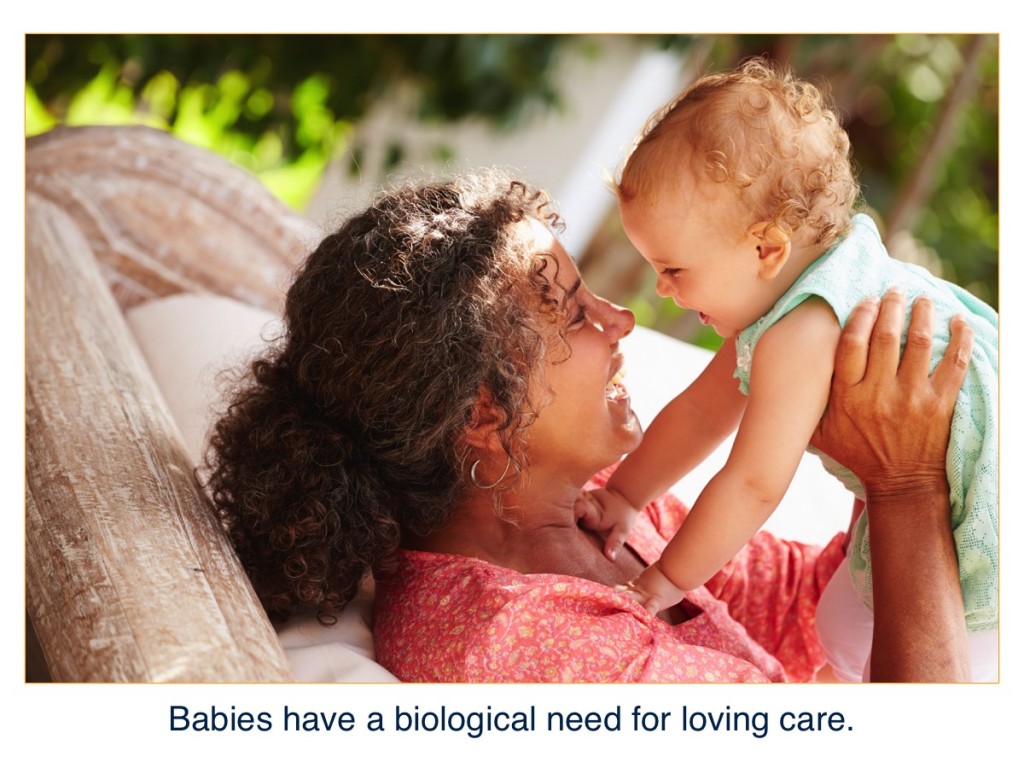
Our understanding of early attachment has changed greatly since the mid 20th century. It is now widely accepted that babies have a biological need for loving care. We also know that children’s healthy development stems from their early experiences with adults. A child may have a more secure attachment with one caregiver but a less secure attachment with another. But children can improve their attachment relationship with the help of a more supportive caregiver. A child forms more secure attachments when a caregiver is sensitive to his needs. We discuss this in more detail in part two “Attachment in Practice.” Other factors influence attachment but only if they impact the quality of caregiving. Some examples are infant traits and family structure.
Infants’ attachment can have a lasting effect on children’s cognitive, social, and emotional development. A more secure attachment in infancy places a child on a positive path. A less secure attachment can put a child at risk for coping and behavioral problems. Early attachment is just one factor that influences children’s development. Yet, the research suggests that attachment plays an important role in development throughout life.
-
- Attachment
- the lasting emotional bond that forms between infants and their primary caregivers
- Proximity maintenance
- a child stays close to an attachment figure for comfort and protection
- Safe haven
- an attachment figure provides comfort and safety when a child feels unsure
- Secure base
- an attachment figure’s presence gives a child the confidence to explore her environment
- Separation distress
- a child experiences stress or anxiety when an attachment figure leaves